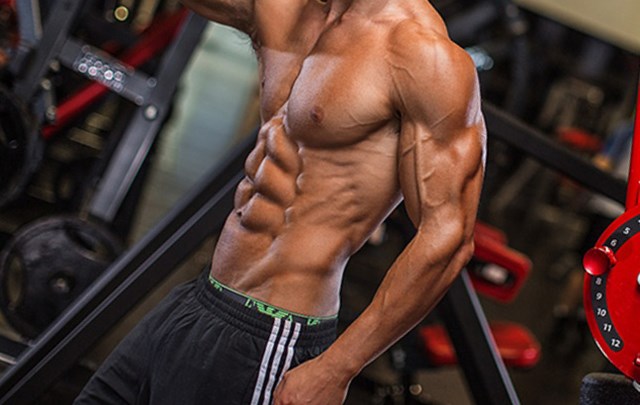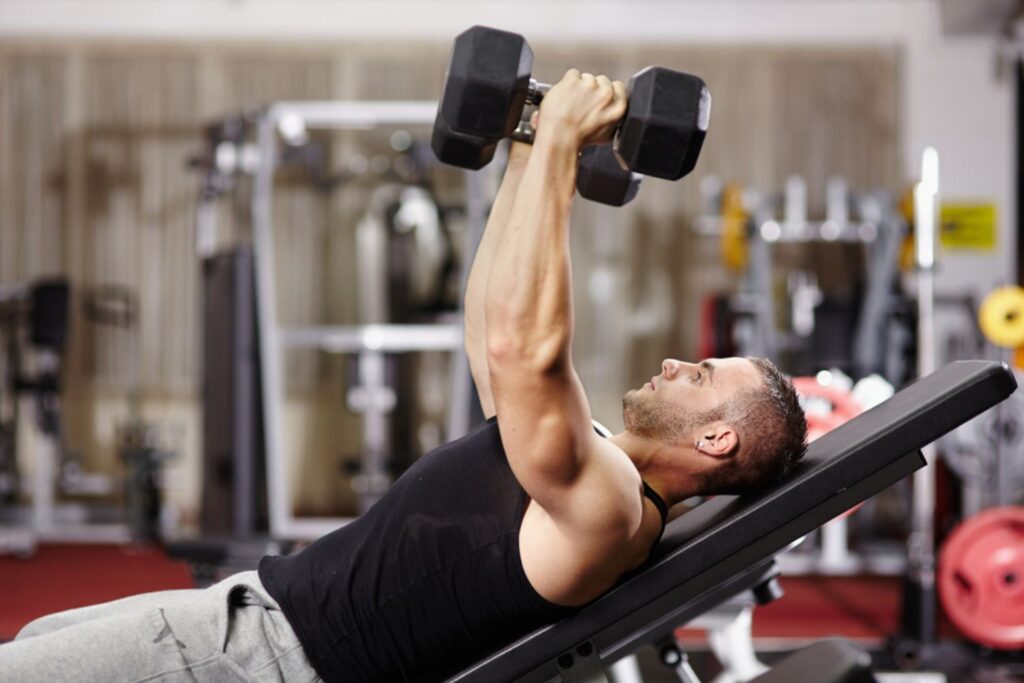THERE ARE ALL kinds of muscle-fixated guys in your local gym, from top-heavy bench press behemoths and stringer tank-wearing arm day devotees to short, stocky squat and deadlift adherents with tree trunk legs. Off in the corner by the yoga mats is the gym bro who is all about abs, spending most of his dedicated exercise time ripping through rounds of situps, then lifting his shirt to reveal their rippling midsection in the mirror. They might have a good handle on their six-pack muscles (the rectus abdominis), but if they want to forge a functional, strong core that will perform in any type of setting, they’ll need to target their oblique muscles, too.
The obliques, which you might have heard being called “side abs,” take a different approach. You might also have heard that to develop them, you’d have to pile on rep after rep of side bends. This isn’t quite the case; the obliques are more than just the side sections of your core, both in terms of their anatomy and function.
You’ll want to target your obliques with the right exercises, that work key functions of your core that aren’t limited to the flexion and bracing involved in most ab-focused workouts. Take this balanced approach, and your muscles won’t just look good when you shed your shirt—you’ll move better and be stronger, too.
What are your obliques?
The obliques are two pairs of muscles that run along either side of your torso. Each consists of the external oblique, which is the closest to the surface and the largest abdominal muscle, and the internal oblique, which lies directly beneath. The muscle fibres of the external and internal obliques run perpendicular to each other, and they work together.
What your obliques do
Your obliques are responsible for movements like bending from side-to-side and rotating your torso from left to right. They also assist with spinal flexion (the movement you’d typically associate with movements like crunches and situps that target those six-pack muscles). The obliques actively resist against rotation to help stabilise and protect your spine. They’re a key muscle group for stability, a muscle group that gets attacked when you twist and turn, and when you brace in those positions. That means moves like side planks and windmills will challenge your oblique muscles, as will any exercises that have you holding a load off-centre while still trying to keep your hips and shoulders square.
Benefits of training your obliques
Training your obliques can be beneficial for your aesthetic goals and building up a balanced, symmetrical set of core muscles. But that’s just the tip of the iceberg. Including exercises that target your obliques in your workouts is majorly important for healthy movement and function, too—since you use the muscles for bending, rotation, and spine stabilisation, strong, healthy obliques are important for both athletic performance and everyday activities.

Unfortunately, too many guys only target their oblique muscles with exercises that only factor in one of those functions, if they target their obliques at all. Side bends and plate dips can only go so far in a well-balanced program. You’ll want to break out of that box if you want a strong, functional core. The following exercises train your obliques in all the ways they function, by using uneven loads, instability, or rotation. The result: You’ll challenge your obliques from every angle. Tack on these moves in your workout as is appropriate, or pair three to five of them together for a killer obliques circuit.
Side plank
Why: This is one of the most popular exercises to train your obliques, and for good reason. The plank is a simple, accessible movement, and flipping to the side gives you a potent bracing and stabilisation challenge.
How to Do It:
- Lie on one side with your legs straight and prop up your upper body on your forearm. Raise your hips so your body forms a straight line from your head to your heels.
- Brace your abs and squeeze your glutes to hold the position.
- If you want to make it harder elevate your feet or add a torso rotation.
Sets and reps: 2 to 3 sets of 40 second holds per side
Copenhagen side plank
















